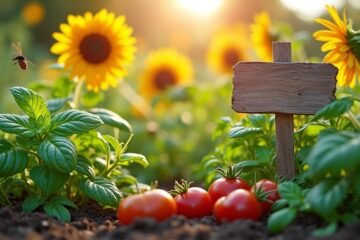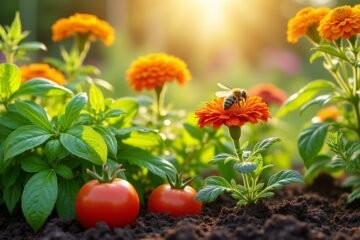Got a tiny space but dreams of a vibrant garden? Let’s get creative! Imagine leafy herbs like basil nudging shoulders with sturdy tomatoes, repelling pesky flies while boosting flavor! Try vertical plants, like sweet peas, climbing up trellises, adding charm and privacy. Don’t forget containers—those colorful pots can host cascading beauties like petunias or trailing strawberries! With these tips, your small space can burst with life and color! Stick around for more fabulous ideas to elevate your gardening game!
Understanding Companion Planting Basics
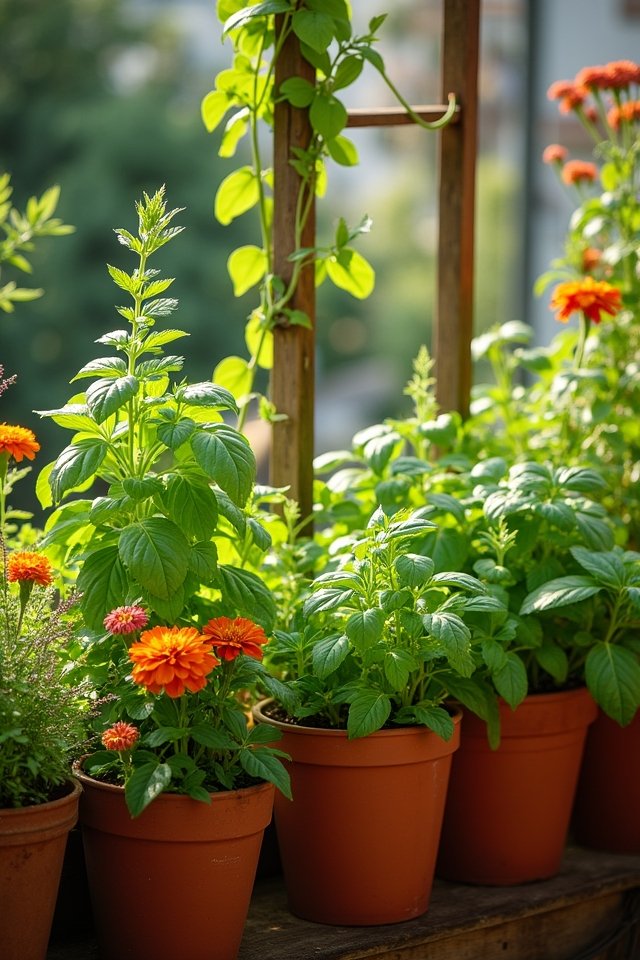
When you plunge into the world of gardening, especially in limited spaces, understanding companion planting can open up a whole new universe of possibilities! It’s like creating a superhero team among your plants. Pairing tomatoes with basil doesn’t just save space; it enhances plant synergy, making flavor pop while warding off pests. Who doesn’t love a good flavor boost? Plus, some plants attract beneficial insects, like ladybugs, to munch on pesky aphids! Imagine walking through your garden, knowing each plant has a role to play, protecting and enhancing one another. This delightful dance of life transforms your tiny haven into a bustling ecosystem! So, why not give it a try? Your plants—and taste buds—will thank you!
Maximizing Vertical Space With Climbers
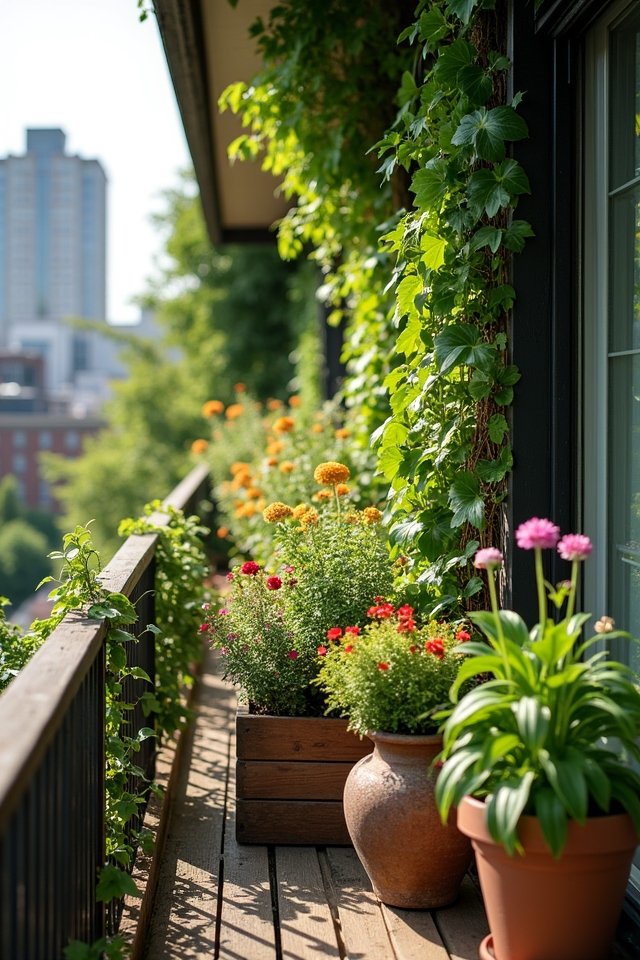
With your newfound knowledge of companion planting, you’re ready to take your garden to new heights—literally! Why confine your greens to the ground when climber varieties like sweet peas and pole beans can reach for the sky? Pair them with sturdy vertical supports like trellises or arbors, turning your walls into lush green canvases. Imagine a vibrant tapestry of leaves and blossoms, right in your own backyard! You can create privacy while enjoying your vertical bounties. Plus, climbing plants offer a wonderful habitat for beneficial insects, enhancing your garden’s ecosystem. Need a quick visual? Think of your garden as a theatrical performance, with each climber playing its part in a colorful, aerial ballet! Let’s get creative!
Layering Plants: Root, Stem, and Leaf
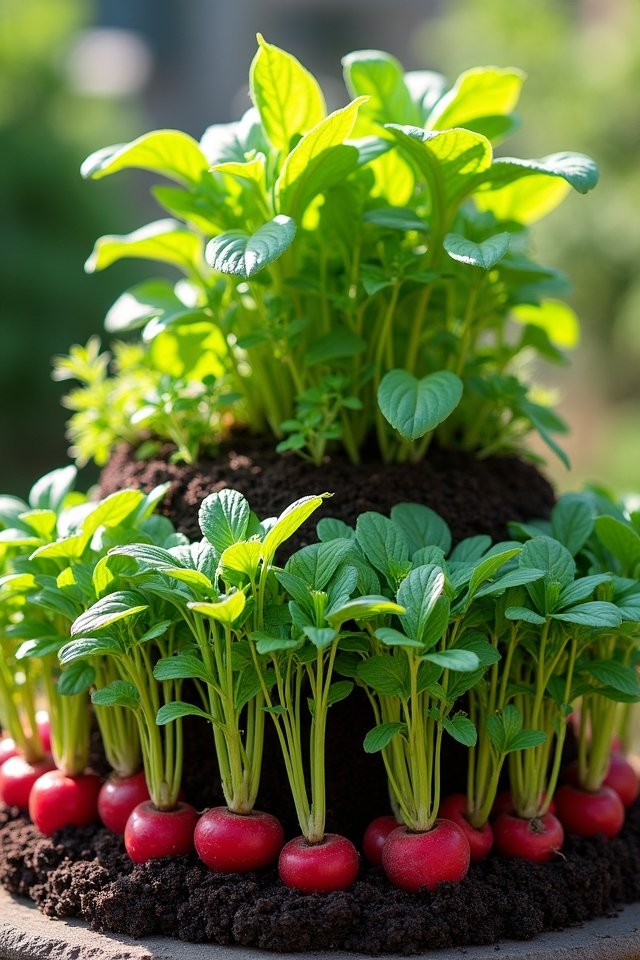
Layering plants in your garden is like creating a delicious, multi-tiered cake of greenery—every layer plays its role in the big picture! Imagine this: beneath your vibrant flowers, you’ve got low-growing herbs, their roots snugly compatible with the surrounding soil, while sturdy stems provide needed support for trailing vines above. You could plant resilient carrots alongside lovely marigolds, letting their powerful roots build a healthy community! Plus, tall sunflowers can offer excellent stem support for delicate morning glories, allowing them to stretch gracefully toward the sun. Isn’t that a sight? This layering strategy not only maximizes space but cultivates harmony among your plants—an innovative dance of nature, resulting in a thriving edible and aesthetic paradise right in your yard!
Herbs as Companion Plants for Pests Control
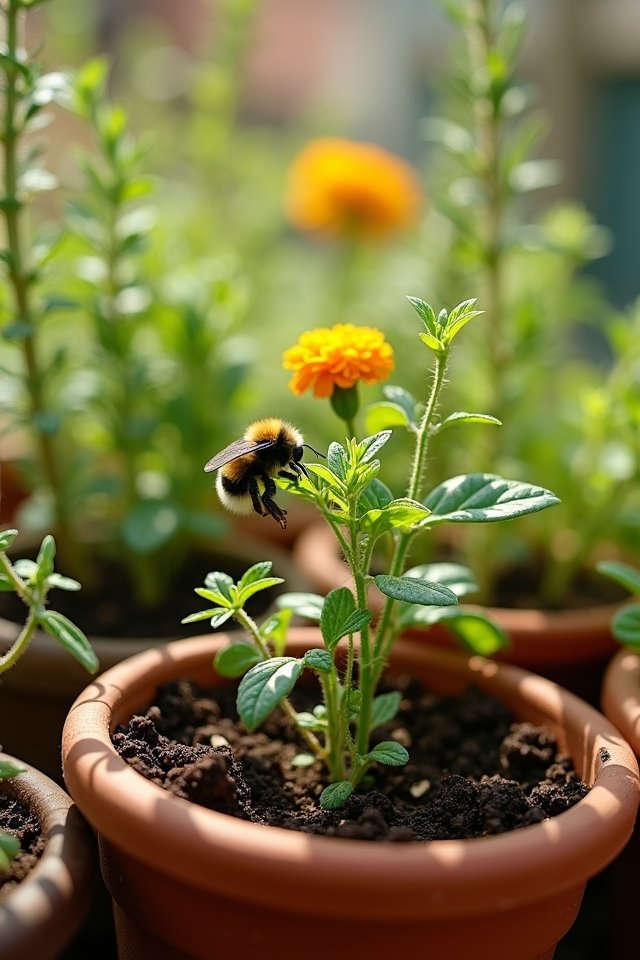
Ever noticed how some herbs seem to have a secret superpower when it comes to keeping pests at bay? It’s true! Those lovely little green wonders offer fantastic herb benefits as natural pest deterrents. For instance, basil’s aromatic leaves repel flies and mosquitoes, while marigolds combined with your herbs create a fragrant border that deters aphids. You’ve got lavender, too! Its delightful scent not only lures pollinators but also sends pesky moths packing. Imagine your thriving mini-garden, bursting with flavor and free from unwanted invaders! By planting these herbs alongside your veggies, you’re transforming your limited space into a natural pest-fighting fortress. So, why not welcome these herbs and accept their vibrant power? Your plants (and stomach) will thank you!
Utilizing Containers for Diverse Plant Combinations
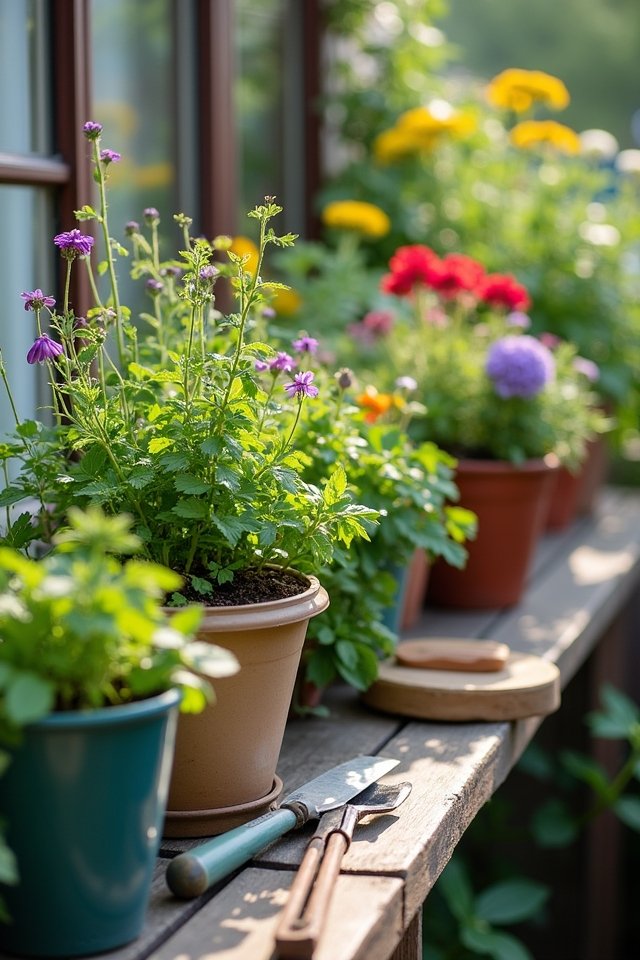
When you think about transforming your small space into a vibrant garden, containers are your best friends! They’re not just handy; they also deliver stunning container aesthetics. Imagine a whimsical collection of colorful pots, bursting with seasonal combinations like sunny marigolds and fragrant basil. You can create a mini culinary paradise right on your balcony! Don’t shy away from mixing textures and colors—try pairing soft lavender with striking red geraniums for a visual feast! Want a splash? Pop in a trailing plant to let it cascade over the edge. With the right plants, your space can feel like a lush oasis, even if you’re working with just a few feet. So why wait? Get creative and start your container garden today!
Pairing Vegetables and Flowers for Pollinator Attraction
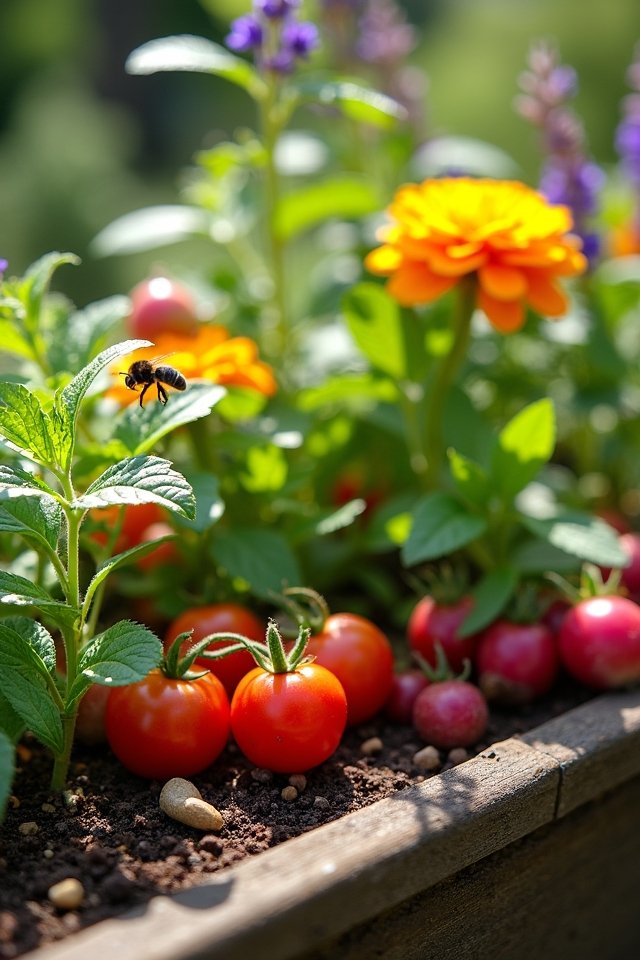
Combining vegetables and flowers isn’t just a creative choice; it’s a brilliant way to attract pollinators to your garden! Imagine buzzing bees and fluttering butterflies visiting your vibrant plot, brightening your day and boosting your harvest. Try mixing:
- Golden marigolds with tomatoes’ luscious green leaves
- Lavender hues alongside cucumber vines
- Brilliant zinnias near your pepper plants
- Charming cosmos enhancing leafy greens
- Bold sunflowers towering over a squash patch
These colorful companions not only draw in essential pollinators but also create a feast for the eyes! With your thoughtful vegetable selection, those striking flower colors will transform your space into a lively ecosystem. Why not make your garden both fruitful and fabulous? Your plants—and pollinators—will thank you!
Creating Miniature Gardens in Small Spaces
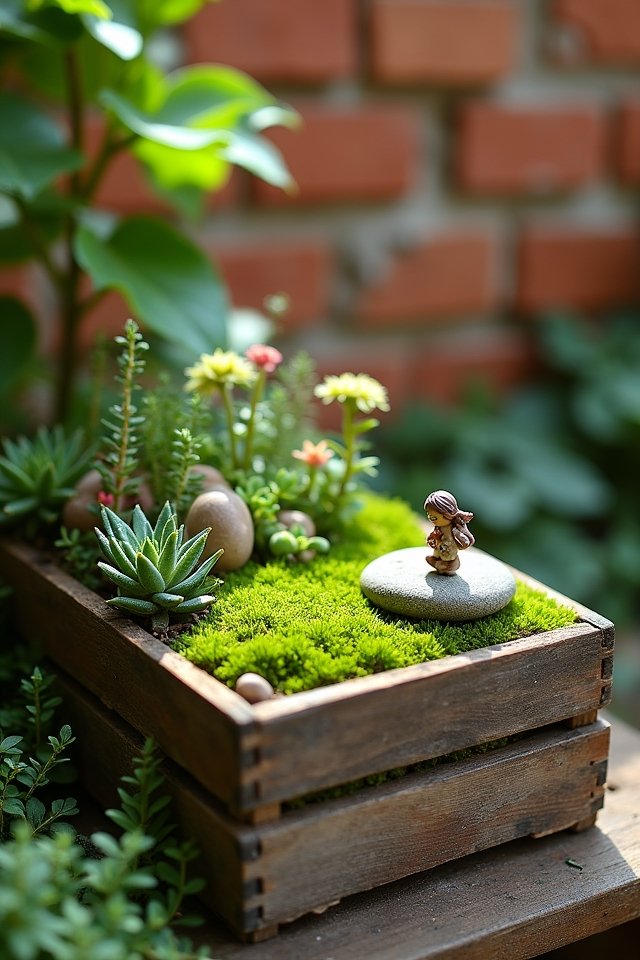
Transforming limited spaces into charming miniature gardens can feel like turning a tiny canvas into a masterpiece! Picture a small patch filled with lush, colorful plants, creating miniature landscapes that thrill the senses. Start with a vibrant selection of succulents, ferns, or wildflowers to build your tiny ecosystems. Use charming containers—teacups or old boots can make delightful homes for your plants! Don’t forget to add cute decorations like tiny gnomes or pebbly pathways to add whimsy. Each little detail pulls it all together, creating a breathtaking view. Feel free to swap plants depending on the season! Who knew you could cultivate such beauty in just a few square feet? Immerse yourself and let your creativity blossom!
Enhancing Soil Health With Companion Plant Choices
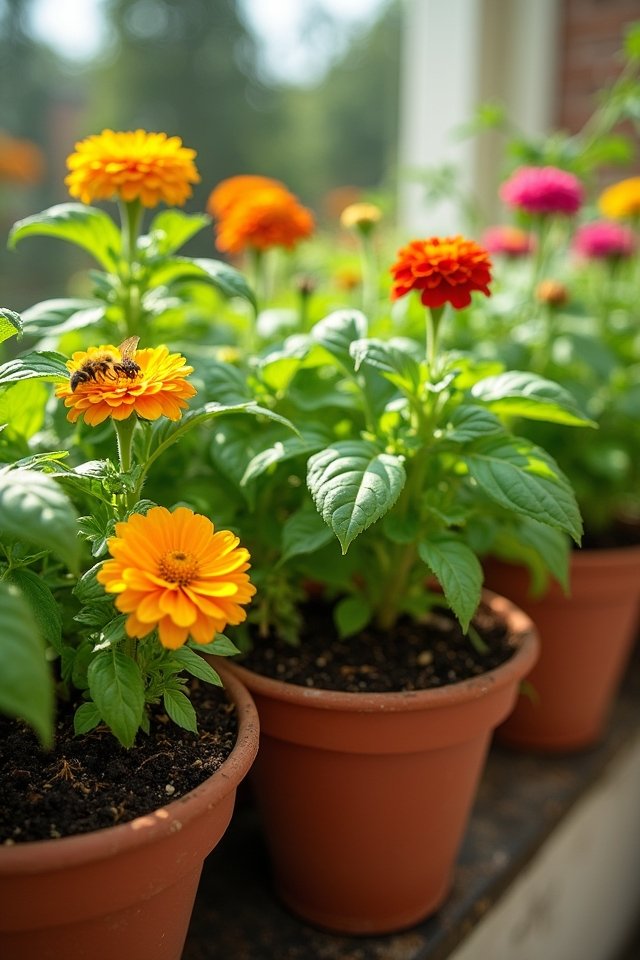
Gardening in tight spots doesn’t mean your soil health has to suffer! With clever companion plant choices, you can boost nutrient cycling and set up a soil amendments dream team. Picture vibrant roots intermingling, exchanging gifts of nutrients, while you sip your morning coffee!
- Nasturtiums keep pests at bay.
- Legumes fix nitrogen, enriching your soil.
- Marigolds exude a lovely aroma that deters unwanted critters.
- Comfrey offers delicious minerals as it breaks down.
- Basil enhances flavors while attracting pollinators.
These colorful companions not only beautify your garden but also work magic beneath the surface. Welcome this natural partnership, and your limited space will thrive, brimming with health and energy! Get ready to reveal the hidden potential of your soil!
Succession Planting for Continuous Harvests
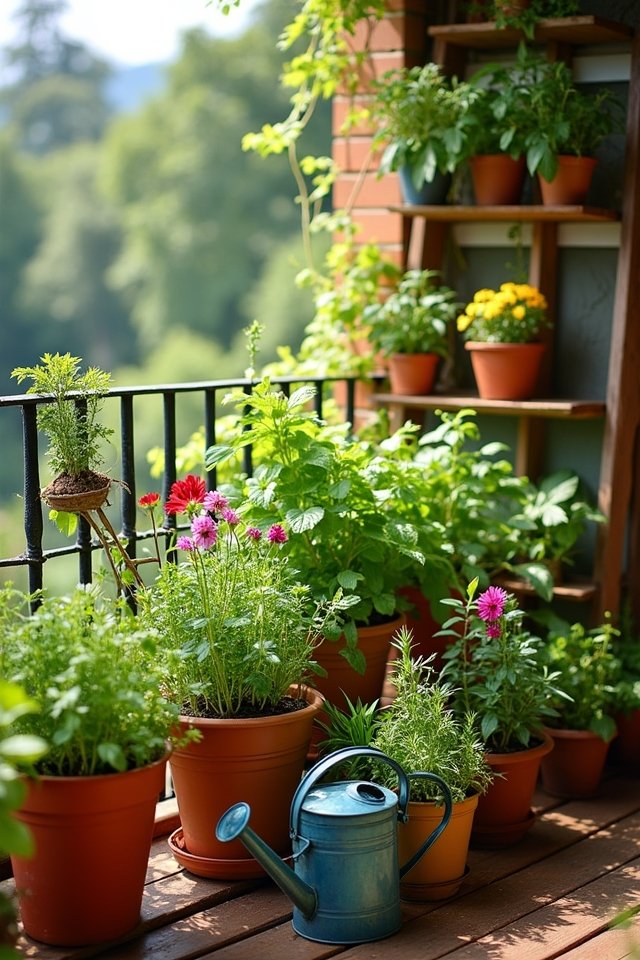
If you’ve ever dreamed of picking fresh veggies on a weekly basis, then succession planting is your golden ticket! Imagine the joy of harvesting crisp lettuce one week, and vibrant radishes the next. By practicing crop rotation and planting seasonal varieties every few weeks, you guarantee your garden’s always bursting with delicious produce. Start with cool-weather crops like peas and spinach, then follow up with warmer choices like tomatoes and peppers. This technique not only maximizes space but also keeps soil healthy and balanced! Picture a garden that’s not just a patch of soil, but a culinary treasure hunt! You’ll be amazed at how variety can transform your meals and ignite your culinary creativity! Happy harvesting!
Creative Use of Edges and Corners for Planting
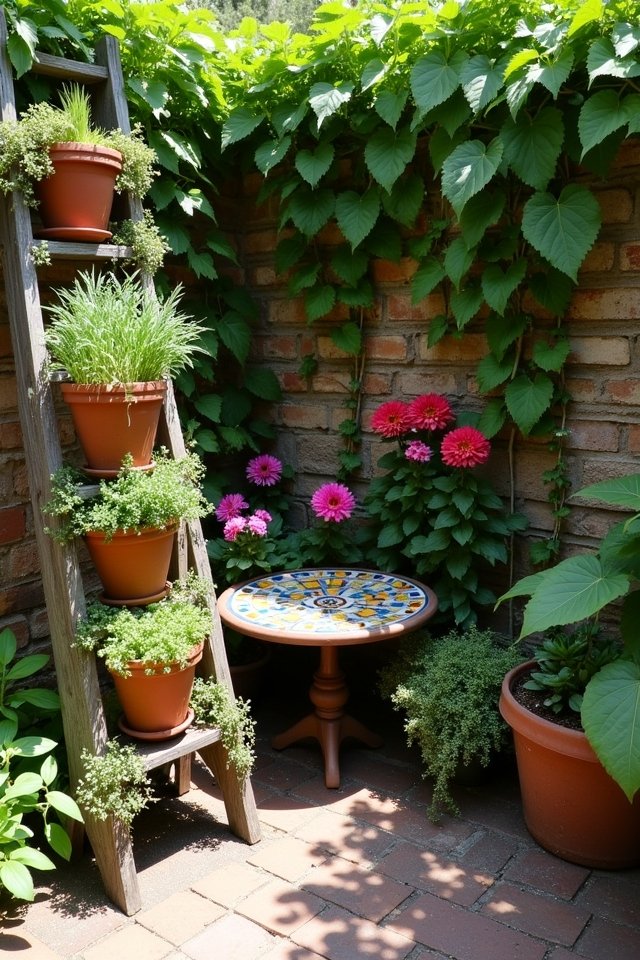
When you realize that every nook and cranny can become a vibrant part of your garden, the possibilities feel endless! Edge planters and corner gardens are the perfect way to transform those overlooked spaces into lush, lively corners. Imagine a colorful array of blooms shooting up against your fence or a fragrant herb spiral tucked in near your doorway!
- Vertical gardens climbing up walls
- Charming containers brimming with strawberries
- Hanging pots cascading with petunias
- A mini succulent garden on a windowsill
- An inviting corner for your favorite spices
Don’t hesitate! With a bit of creativity, those edges and corners can become your garden’s little powerhouses! Your space will visually pop, creating a sanctuary that feels big and bold!
Frequently Asked Questions
What Are the Best Plants for Shady Limited Spaces?
If you’re dealing with shady spots, don’t fret! You can’t go wrong with shade-loving plants like hostas and ferns. They dance beautifully in low light! For container-friendly options, try delicate astilbe or vibrant impatiens—they’ll splash color where the sun won’t shine. Picture your patio transformed into a lush retreat; it’s like nature’s hug! Why not invite these leafy companions into your space and watch them thrive? You’ll be delighted!
How Do I Choose the Right Soil for Container Gardening?
When choosing soil for container gardening, picture your plants’ happiness—fluffy, nutrient-rich soil and effective drainage solutions! You’ll want a mix of potting soil, compost, and perlite for ideal growth. Think of it as the cozy bed your plants need! Test your soil, check for moisture retention, and make sure it isn’t too dense. With the right soil types, your plants will thrive and sing your praises—who wouldn’t love a happy garden? Happy planting!
Can I Use Herbs Indoors for Companion Planting?
Absolutely, you can use herbs indoors for companion planting! Imagine the fragrant basil mingling with tomatoes or the zesty cilantro boosting nearby peppers. Herbs bring incredible benefits—they repel pests and enhance flavors. Plus, indoor gardening with these green companions adds life to your space. Just think about how amazing it’ll be to snip fresh mint for tea right from your kitchen! It’s like having a mini garden party—every day! Who wouldn’t want that?
What Types of Pests Are Common in Small Gardens?
In your cozy garden, you might face some pesky visitors! Aphids love munching on your plants, but don’t worry—controlled sprays or a spritz of soapy water can be your trusty knights! As for slugs, those slimy critters might sneak in, but creating barriers with diatomaceous earth can turn them away. Think of your garden as a castle; keep it well-defended, and those pests won’t stand a chance! Plant power to the rescue!
How Do I Plant in a Balcony or Rooftop Garden?
You’re ready to transform your balcony layout or rooftop design into a vibrant green oasis! Start by selecting containers—think colorful pots or quirky vertical planters! Spread herbs, flowers, or even dwarf tomatoes for a tasty touch. Mix and match sizes for visual appeal! Don’t forget drainage; it’s your garden’s lifeline. Use trellises for climbing plants; they’re like the superheroes of small spaces! Just imagine sipping tea surrounded by your own lush paradise! Isn’t that dreamy?
